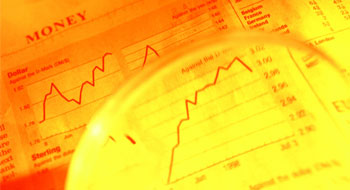
Canada’s economy may have grown at a moderate pace last year, but it’s poised for a year of solid growth in 2012, according to the latest RBC Economic Outlook issued by RBC Economics Research.
Against the backdrop of a strengthening U.S. economy, low interest rates, strong corporate balance sheets and rising commodity prices, RBC forecasts real GDP to grow by 2.6% in both 2012 and 2013.
“Canada’s economic growth clocked in at 2.5% in 2011, shaking off a few speed bumps in the middle of the year and ending the fourth quarter with only moderate real GDP growth of 1.8%,” said Craig Wright, senior vice-president and chief economist with RBC. “The country’s main engines of economic activity from the early days of the recovery—consumer spending and residential investment—are likely to play supplementary roles as the economy shifts into slightly higher gear on the road ahead.”
Exports account for 30% of Canada’s GDP, and approximately three-quarters of that trade flow heads to the U.S., where continued economic recovery will improve demand for Canadian exports such as autos, machinery and lumber. RBC expects the U.S. economy to expand by 2.5% in 2012 and 3% in 2013.
High commodity prices and strong corporate balance sheets are expected to boost business investments’ overall contribution to growth by 80 basis points (bps) this year and 90 bps in 2013, the report noted.
RBC forecasts that real exports will return to the pre-recession peak level in 2013, with net exports boosting growth by 100 bps in 2012 and 30 bps points in 2013. Countering these areas of strength, the anticipated tightening in fiscal policy will have a restraining effect on economic growth.
“We expect that a continuation of accommodative monetary policy will offset the potential impact of the withdrawal of fiscal stimulus,” said Wright. “As inflation will likely remain close to the Bank of Canada’s 2% target, we expect that the overnight lending rate will stay at its current level until early 2013.”
Despite disappointing labour data, RBC expects greater strength in hiring going forward, with the unemployment rate likely falling to 6.9% by the end of 2013.
The pace of consumer spending eased to 2.2% in 2011, down sharply from 3.3% in 2010. RBC projects that consumer spending this year and next will grow at a rate comparable with 2011, with durable goods accounting for approximately 25% of the increase.
However, high debt levels, which stood at 150.6% of personal disposable income in the fourth quarter of 2011, will continue to weigh on consumer spending.
“At this point, the low interest rate environment is keeping the cost of servicing debt manageable,” said Wright. “We haven’t seen any significant increase in consumer bankruptcies or a surge in mortgage delinquencies. At the same time, household debt has been weighing on the minds of many, and the willingness to take on debt has likely diminished.”
This, he said, reduces the likelihood of another debt-charged surge in spending on goods, services or housing.
Regionally, Western Canada is expected to top the growth rankings in 2012, with Saskatchewan and Alberta leading the way and Manitoba following closely behind.
The economies of Newfoundland and Labrador, British Columbia and Ontario are expected to grow at rates close to the national average.
Quebec and the remaining Atlantic provinces, however, are expected to grow below the national average.
